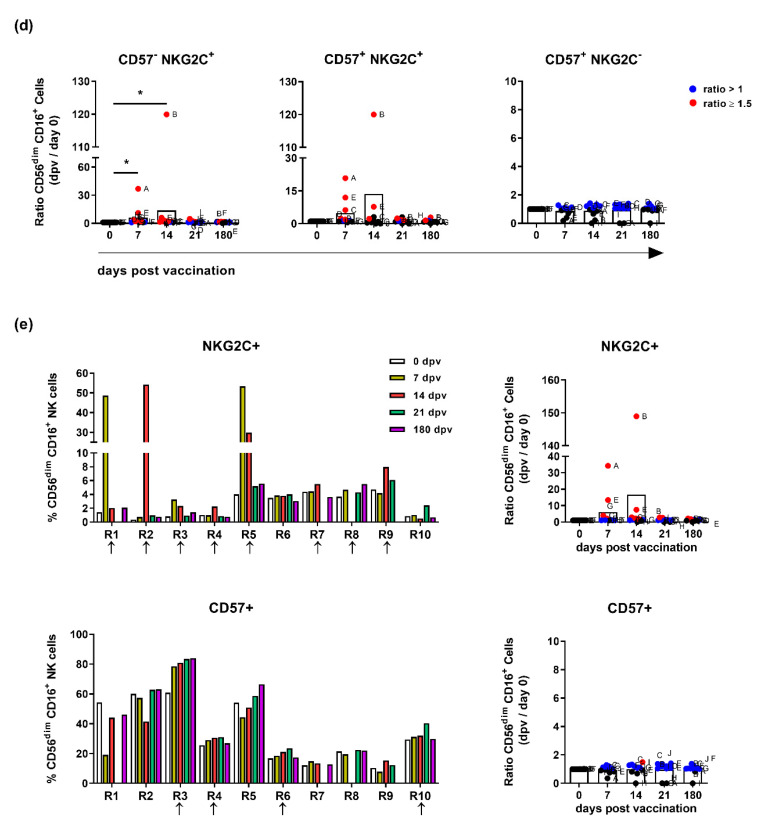Figure 1.
Influenza vaccination affects the frequency of NKG2C-expressing natural killer (NK) cells. Peripheral blood mononuclear cells (PBMCs) isolated from vaccinated individuals prior to vaccination and at the indicated time points post-vaccination (dpv = days post-vaccination) were stained for the surface markers CD56, CD3, CD16, NKG2C and CD57. (a) Frequencies of total CD3−CD56+ NK cells and (b) of CD3−CD56bright, CD3−CD56dim and CD3−CD56dimCD16+ NK cell subpopulations. Diagrams show the connected column mean with 95% confidence interval. (c) Frequencies of NK cell populations characterized by the expression of CD57 and NKG2C. Columns represent individual data points. (d) CD57- and NKG2C-expressing CD56dimCD16+ subpopulations depicted as the ratio of cell frequencies detected at the indicated time points post-vaccination and the frequencies detected prior vaccination (day 0). Diagrams are depicted as scatter plots with bars of individual assigned data points. (e) CD56dimCD16+NKG2C+ and CD56dimCD16+CD57+ NK cells displayed as frequencies and as the ratio to the day before vaccination. Columns represent individual data points; diagrams are depicted as scatter plots with bars of individual assigned data points. Arrows indicate donors with vaccine-induced immunological changes. Asterisks denote significant values as calculated by unpaired and non-parametric Kruskal–Wallis test. * p ≤ 0.05. Letters in panels (d, e) indicate single responders.


